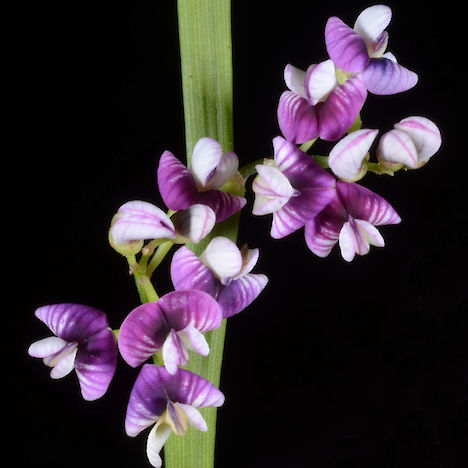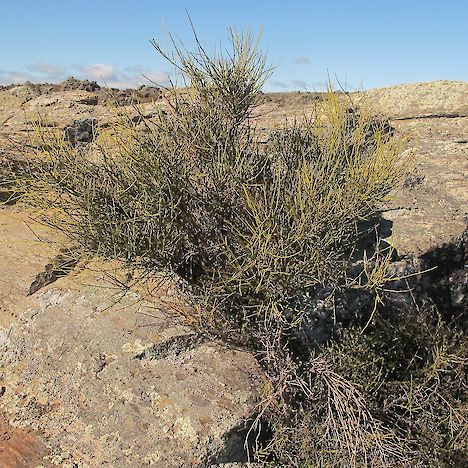Threat category:
At Risk: Declining?Regions:
Canterbury, Otago, SouthlandDistribution:
South Canterbury to Southland
Key Features
- Yellowish shrub with untidy, erect (rarely spreading or prostrate) leafless branches.
- Branches rounded, generally 1-3.5 mm wide, with long, yellow tips.
- Flowers small, pea-like, white/purple-violet, in small clusters.
- Mature fruit a drooping dry pod containing 1-4 hard mottled seeds.
Distribution and Habitat
- South Island: Otago, Southland, Mackenzie Basin, and upper part of Waitaki River valley in south Canterbury.
- Desert broom grows in coastal, lowland, and montane areas of tussock grassland and shrubland, among rock outcrops, in river gorges, on river terraces, on the margins of forest, and on cliffs.
Threats
- Modification of habitat due to intensification of farming.
Management Opportunities
- Survey for new locations.
- Mark known sites.
- Protect habitat.
- Collect seed, propagate, and reintroduce to appropriate sites.
- Ensure that forest owners are aware of potential habitats and can recognise the species.
Monitoring Options
- Check existing populations annually.
- Report new locations to DOC.
- Further Information and Support
- Weed and pest animal control - Department of Conservation, Regional Councils.
References
- Heenan P.B. (1996). A taxonomic revision of Carmichaelia (Fabaceae – Galegeae) in New Zealand (part II). New Zealand Journal of Botany 34: 157-177.
- New Zealand Plant Conservation Network (NZPCN). http://www.nzpcn.org.nz




